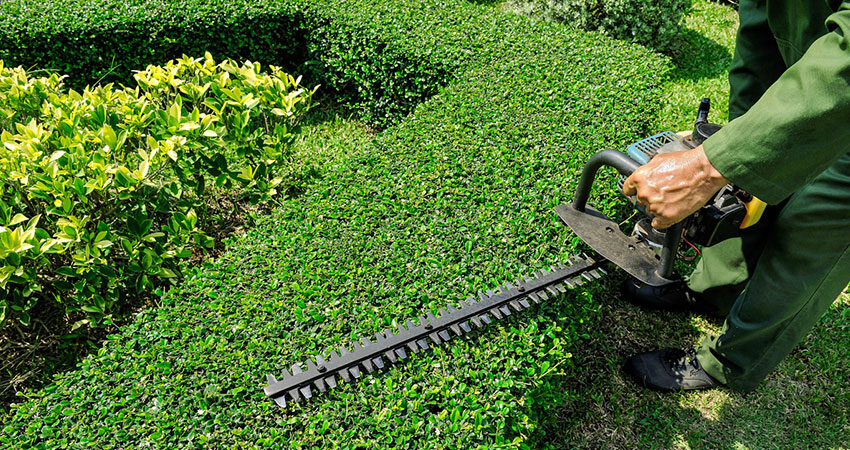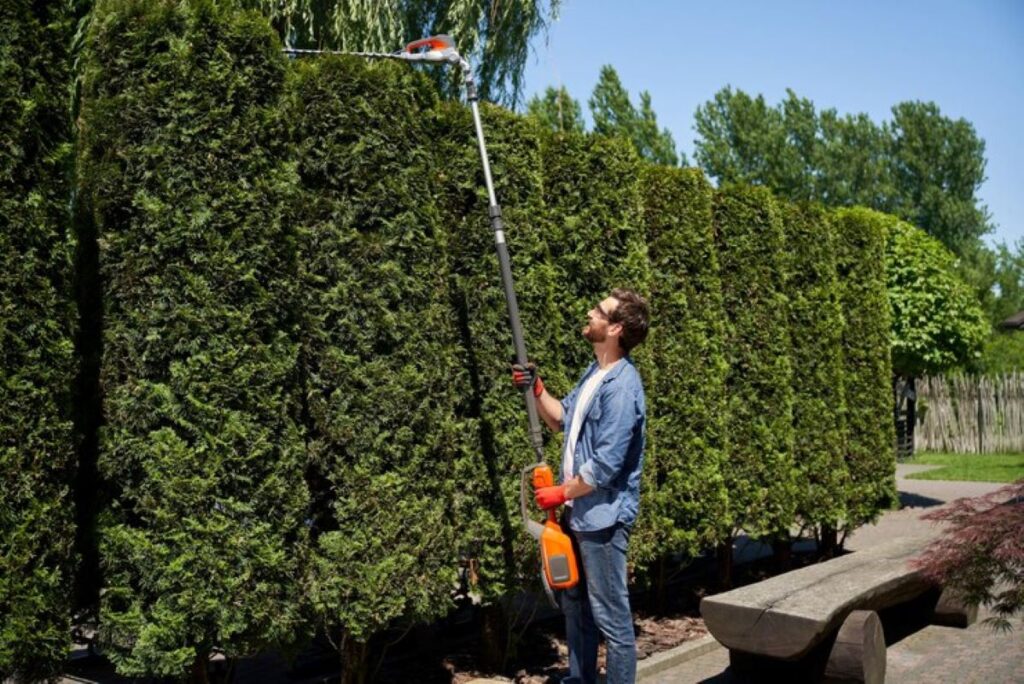A well-maintained hedge can be the crowning glory of any garden, providing structure, privacy, and a touch of elegance. However, keeping hedges in pristine condition requires regular care and attention. This guide offers essential tips for hedge maintenance to ensure your garden looks its best throughout the year.
Understanding Your Hedge
Before diving into hedge maintenance techniques, it’s crucial to understand the type of hedge you have. Different species have varying growth rates, pruning requirements, and ideal conditions. Common hedge types in Australian gardens include native shrubs, ornamental hedges, and fruit-bearing varieties. Each type has its unique characteristics that influence maintenance practices.
Identifying Hedge Species
Identifying the species of your hedge is the first step in effective maintenance. Native Australian plants such as Lilly Pilly or Callistemon are popular for their resilience and adaptability. Ornamental hedges like Boxwood or Privet provide a classic look but may require more frequent trimming. Understanding your hedge’s growth patterns will help you tailor your care routine accordingly. Additionally, some hedges can be more susceptible to pests and diseases, so recognising the specific species can aid in early detection and treatment, ensuring your hedge remains healthy and vibrant throughout the year.
Growth Patterns and Seasons
Most hedges exhibit seasonal growth patterns, with spring and early summer being the most active periods. During these times, hedges may require more frequent pruning to control their shape and size. Conversely, late autumn is a suitable time for a more substantial trim, allowing the plants to prepare for dormancy in winter. It is also important to consider the local climate, as variations in temperature and rainfall can significantly affect growth rates. For instance, in areas with milder winters, some hedges may continue to grow, albeit slowly, which could necessitate a lighter touch in pruning to maintain their health and appearance. Furthermore, understanding the specific needs of your hedge during these different seasons can enhance its resilience and aesthetic appeal, making it a more integral part of your garden landscape.
Essential Hedge Maintenance Practices
Maintaining a hedge involves several key practices, including pruning, feeding, and watering. Each of these elements plays a vital role in ensuring your hedge remains healthy and visually appealing.
Pruning Techniques
Pruning is arguably the most important aspect of hedge maintenance. Regular trimming helps to maintain the desired shape and size while promoting healthy growth. It’s advisable to use sharp, clean tools to make precise cuts, which reduces the risk of disease.
For most hedges, a light trim should occur at least twice a year. However, more vigorous species may require quarterly attention. When pruning, aim for a tapered shape, wider at the base and narrower at the top, to allow sunlight to reach all parts of the hedge. Additionally, consider the timing of your pruning; late winter or early spring is often ideal, as it encourages new growth just as the growing season begins. This practice not only enhances the aesthetic appeal but also improves air circulation within the hedge, reducing the likelihood of fungal infections.
Feeding Your Hedges
Just like any other plant, hedges benefit from regular feeding. A balanced fertiliser applied in spring can provide essential nutrients that promote healthy growth. Look for a fertiliser specifically formulated for hedges or shrubs, as these will contain the right balance of nitrogen, phosphorus, and potassium.
Organic options, such as compost or well-rotted manure, can also be beneficial. These not only nourish the plants but also improve soil structure and promote beneficial microbial activity. Moreover, incorporating mulch around the base of the hedge can further enhance nutrient retention and protect the roots from extreme temperatures. As the mulch breaks down over time, it will add organic matter to the soil, creating a richer environment for your hedge to thrive.
Watering Practices
Watering is critical, especially during dry spells. Newly planted hedges require regular watering to establish their roots. Once established, most hedges are relatively drought-tolerant, but during prolonged dry periods, additional watering may be necessary to keep them healthy.
It’s best to water deeply and less frequently, encouraging roots to grow deeper into the soil. Mulching around the base of the hedge can help retain moisture and suppress weeds, making maintenance easier. Furthermore, consider the use of drip irrigation systems for larger hedges, as this method delivers water directly to the roots, minimising evaporation and ensuring that your plants receive the hydration they need. Regularly checking the moisture level of the soil can also help you determine when watering is necessary, ensuring that your hedges remain robust and vibrant throughout the seasons.

Pest and Disease Management
Hedges can be susceptible to various pests and diseases that may affect their health and appearance. Early detection and intervention are crucial to managing these issues effectively.
Common Pests
Common pests that may infest hedges include aphids, scale insects, and spider mites. Regularly inspecting your hedges for signs of infestation, such as discolouration or webbing, can help catch problems before they escalate. Insecticidal soap or neem oil can be effective in controlling these pests without harming beneficial insects.
Diseases to Watch For
Hedges can also suffer from diseases such as powdery mildew or root rot. Powdery mildew presents as a white powdery coating on leaves and can be treated with fungicides or by improving air circulation around the plants. Root rot, often caused by overwatering or poor drainage, may require removing affected plants and improving soil conditions.
Seasonal Hedge Care
Seasonal care is essential for maintaining the health and appearance of hedges. Each season presents unique challenges and opportunities for hedge maintenance. Visit https://www.devon.gov.uk/roads-and-transport/factsheet/hedges-and-verges/maintaining-hedges-and-trees/ to get more about maintaining hedges and trees.
Spring Care
Spring is the ideal time to begin your hedge maintenance routine. As plants emerge from dormancy, a thorough inspection should be conducted to assess any winter damage. This is also the time for the first round of pruning and fertilising, setting the stage for robust growth throughout the warmer months.
Regular watering should commence if rainfall is insufficient, ensuring that new growth is well-supported. Additionally, applying a layer of mulch can help retain moisture and suppress weeds.
Summer Maintenance
During summer, hedges may require more frequent watering, especially in hot, dry conditions. Regular trimming is crucial to keep hedges in shape and encourage dense growth. This is also a good time to monitor for pests, as warmer temperatures can lead to increased activity.
Autumn Preparation
As autumn approaches, it’s time to prepare hedges for the cooler months. A final trim can help shape the plants before winter, while fertilising with a slow-release product can provide nutrients that support root development. Ensuring that hedges are well-watered before winter sets in can also help them withstand colder temperatures.
See Also : Why Tree Pruning in Sydney Is Essential for Tree Health
Tools for Effective Hedge Maintenance
Having the right tools can make hedge maintenance more efficient and enjoyable. Investing in quality equipment will not only save time but also ensure that your hedges receive the best care possible.
Essential Tools
Some essential tools for hedge maintenance include:
- Hedge Shears: A good pair of hedge shears will allow for precise cuts and shaping.
- Pruning Saw: For thicker branches, a pruning saw is invaluable.
- Secateurs: Ideal for smaller branches and fine detail work.
- Gloves: Protecting your hands is essential, especially when working with thorny varieties.
Safety Considerations
When using tools, safety should always be a priority. Ensure that all equipment is well-maintained and sharp to reduce the risk of accidents. Wearing protective eyewear and gloves can also help prevent injuries while working.

Conclusion: A Sharp Hedge for a Sharp Garden
Maintaining a hedge may seem like a daunting task, but with the right knowledge and practices, it can be a rewarding endeavour. By understanding your hedge, employing effective maintenance techniques, and being vigilant about pests and diseases, your garden can remain a vibrant and inviting space.
Investing time in hedge maintenance not only enhances the aesthetic appeal of your garden but also contributes to the overall health of your outdoor environment. A well-kept hedge can provide privacy, shelter for wildlife, and a beautiful backdrop for your garden, making it a worthy addition to any home.
With these tips in mind, take the plunge into hedge maintenance and enjoy the satisfaction of a sharp, well-maintained garden all year round.


